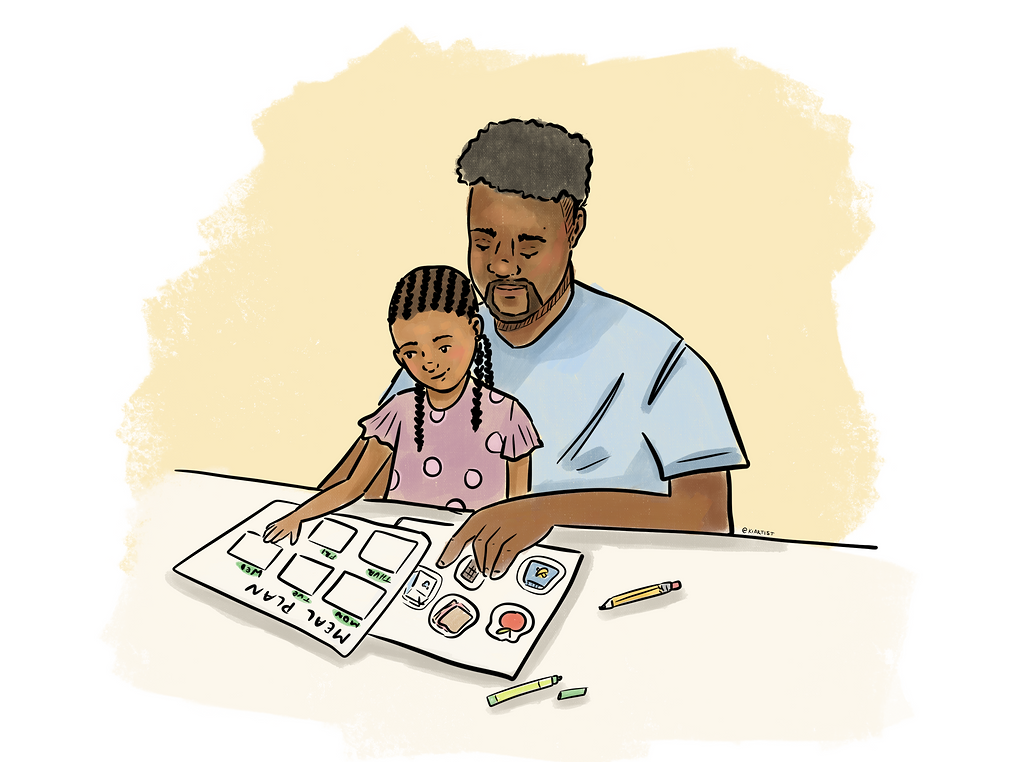How to Kickstart a Healthy School Year
Here’s a primer on how to incorporate healthy eating habits into your family’s routine when it’s time to put the languid days of summer aside and gear up for hectic school days.
A RECIPE FOR SUCCESSFUL MEALS
by Jenna Braddock, Registered Dietitian Nutritionist
Set yourself up for menu planning success by choosing meals according to your weekly routine. Meal plan with your kids, allowing them to give input on the meals of the week. This is a good way to get buy-in from picky eaters and teach how everyone gives and takes in a family.
· Utilize slow cooker or instant pot meals on days when you won’t be home to cook. These meals can be prepped in the morning and are ready for you the moment you walk in the door at night.
· If you need to eat out for dinner, choose the night where it really is a necessity instead of just convenient. It’s likely that eating out will always feel more convenient but with a little planning, so can eating home-cooked food.
· Towards the end of your week, plan a quesadilla night where you can use up leftovers from other meals in your filling. Kids can even help make them based on their personal preferences.
· Always keep a bag or box of salad greens and matchstick carrots in your refrigerator to easily throw together a salad with any dinner. It’s a great way to round out quick meals with a serving of vegetables.
REFRIGERATOR AND PANTRY REFRESH
Maureen Porcelli Bush, NEAT Jax
Prepare for the upcoming school year with a refrigerator and cabinet refresh to help get organized for lunchbox packing, meal planning and snacking. While creating a “Pinterest-worthy” space might be the initial dream, the real goal is to create something sustainable and functional for all members of the household. Here are some tips to transition your refrigerator and pantry space into a kid-friendly and efficient zone.
The Refrigerator
· Use clear bins for grouping like items inside the fridge.
· Adjust refrigerator shelves to accommodate your needs and make it easier for kids to reach what they need. Dedicate a shelf for lunch items.
· Dedicate a shelf/space for meal prepping and have the kids help as a way to build cooking skills.
· Each drawer should be assigned a category. We recommend using them as the refrigerator companies intended, for veggies, fruits and meats/cheeses.
The Pantry
· Take everything out and sort through it all, tossing anything that's expired or no longer edible. This step allows you to take inventory of what needs to be stored and better determine the best containers and placement.
· Stock your pantry with kid-friendly snacks and place snacks at an accessible level so kids can serve themselves.
· Unbox all the snacks to eliminate finding empty containers in the pantry and to make managing inventory easier.
· Get creative with storage solutions and organize food items by category — one bin for chips, another for granola bars, and so on.
· Label your bins and containers to make it easy to find what you're looking for and help everyone in the house know when to replace things once they are depleted.
· Once everything has been assigned a category and a container, bin or space, load it all back into the pantry.
FUELING THE SCHOOL DAY
Katie Hammill, Certified Nutritional Practitioner
I like to think of food in terms of fuel when it comes to both kids and adults. Sadly, for many kids healthy eating has a negative connotation. It doesn't have the fun characters and marketing dollars that chips and soda do. So instead of competing, I get kids involved in how food makes them feel and how it can power their day. Want to ace your math test? Eat some healthy fats. Want to make the basketball team? Make sure you've got some healthy carbs. Want to focus through an afternoon of Spanish class? Incorporate protein in every meal. To build on this I break down lunch into simple categories that parents and kids can use to create balanced meals. Bento box style lunch boxes make it easy to incorporate all the categories. Ensure you have at least one of each:
Protein – muscle-building foods: Meat, organic deli meat, hard-boiled eggs, edamame, cheese, tofu, protein powder, yogurt, cottage cheese, nuts, nut butters or seeds.
Fruits and vegetables – It’s ok for kids to have likes and dislikes; it is not ok to rule out food groups: Eat the Rainbow, especially when the seasons change and different produce is available.
Healthy fats – brain food: Seeds, guacamole cups, nuts, 100% peanut butter, almond butter, cheese, sun butter, salad dressings, coconut, olives, hummus, full-fat yogurt.
Energy boosters – these are the nutrient-dense carbs needed for growth and a quick hit of energy Gluten-free or whole-grain crackers, rice cakes, beans, rice, quinoa, dried fruit, oatmeal, leftover sweet potatoes, sourdough bread.
Sit down with your kids at the start of the school year and draft a list of the foods they like in each of the categories. Post this on the fridge and shop from the list. This list becomes a lifesaver when it comes to packing lunches during the busy school week.







